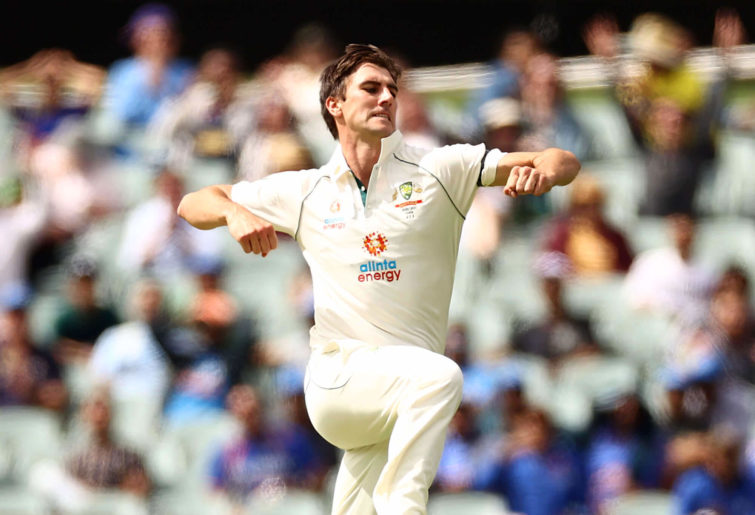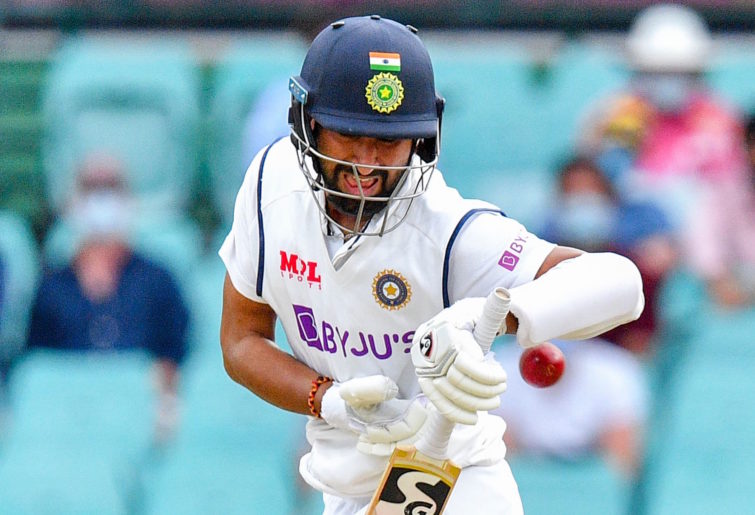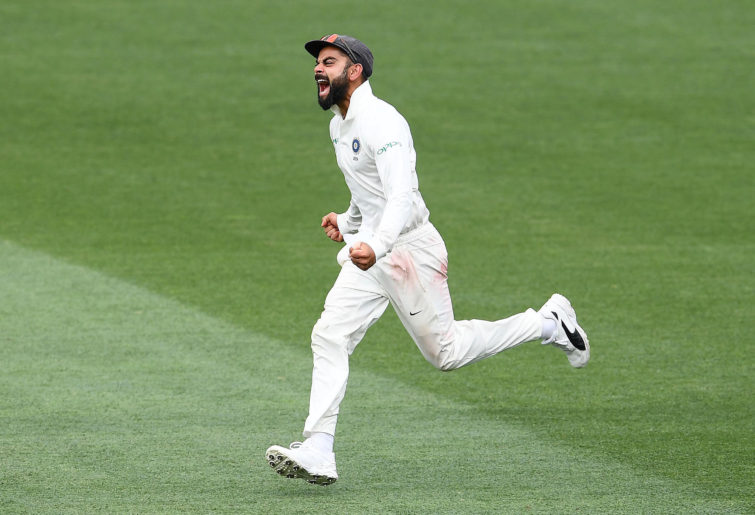Virat Kohli absolutely filthy after his wicket was upheld on controversial waist-high delivery
The Third Umpire ruled that he was standing outside his crease and the ball was dipping, making it a fair delivery - but the…
Opinion
India, a country with around 1.3 billion people, held its breath as Australian pacer Josh Hazlewood came marching in to bowl the last ball of his over.
Wicketkeeper Rishabh Pant was on strike, and pacer Navdeep Saini was at the non-striker’s end. India required three runs to win, had three wickets in hand, and had lost Shardul Thakur a couple of balls ago.
The finish line was in sight, but ask a motorsport fan and they could have remembered the 2001 Barcelona Grand Prix, when Mika Hakkinen retired in the last lap. He led the race comfortably but could not get the job done and Michael Schumacher stole an unlikely victory.
Back at the Gabba, Hazlewood bowled a wide yorker so Pant could not rotate the strike and Saini would face the first ball of the new over. The Indian wicketkeeper had other plans.
He went deep into the crease, pushed the ball past short mid-off and punched the air in jubilation even before the ball reached the boundary.
There were high fives and hugs all around, and the entire country celebrated the heroic win.
India successfully defended the Border-Gavaskar Trophy they had won down under in 2018-19 and snapped Australia’s 32-year unbeaten record in Brisbane.
They now top the inaugural ICC World Test Championship ladder. Australia dropped two places to third, below New Zealand.
The Border Gavaskar Trophy 2020-21
India were battered, bruised and greatly scrutinised over the last few weeks.
It started with the news that regular captain Virat Kohli would return to India on a paternity leave after the first Test. Playing three quarters of the series without their best batsman had pundits write India off before the series began.
Furthermore, return of Steven Smith and David Warner and the emergence of Marnus Labuschagne had made Australia favourites to regain the trophy on home soil.
After trading blows in the limited overs series, India came to the first Test, a day-night match at the Adelaide Oval, with good performances in the warm-up matches.
They outplayed Australia for the first two days before a sensational collapse.

(Photo by Ryan Pierse/Getty Images)
Taking a first innings lead of 63, India finished their second innings with 36 runs in under 22 overs for the loss of nine wickets. Mohammed Shami retired hurt with a fractured right arm.
India succumbed to their lowest ever score. The team was humiliated and had become the butt of jokes. Not only were they going to be without Kohli, but Shami was also ruled out of the series.
Michael Vaughan, Shane Warne, Mark Waugh, Ricky Ponting and Brad Haddin reiterated their prediction of a clean sweep.
The Boxing Day Test followed, and India made four changes to the team. Shubman Gill debuted to replace Prithvi Shaw, Kohli was replaced by Ravindra Jadeja, wicketkeeper Wriddhiman Saha made way for Pant and Mohammed Siraj replaced Shami.
Ajinkya Rahane took over the reigns and scored one of the best centuries by an Indian overseas. Jasprit Bumrah’s four wickets restricted Australia in the first innings. The bowlers outplayed the Australian batsmen in the second innings, and India did not break much sweat to win the Test in four days. Debutant Siraj won praise for his confident bowling performance.
The series was tied 1-1 and the Border-Gavaskar Trophy was well and truly alive. Jadeja oozed class but India paid the price for their adventure as paceman Umesh Yadav got ruled out of the series with an injured calf.
The third Test in Sydney proved to be a different affair.
Both sides went into the match with a couple of changes. Australia welcomed back Warner and gave a debut to Will Pucovski in the places of Joe Burns and Travis Head, while India replaced the injured Yadav with debuting Navdeep Saini, and Rohit Sharma returned at the top to replace Mayank Agarwal.
Australia dominated the game before Indians dug deep to draw the match. Pant’s counter-attacking 97 and Pujara’s gritty 77 gave them a brief hope of chasing 407 before Hanuma Vihari and Ravi Ashwin dropped the anchor. The duo batted for over 43 overs and saved India the match.

(Photo by Saeed KHAN / AFP via Getty Images)
The Test was not short of controversies. Siraj and Bumrah alleged they were racially abused by a section of fans and Smith was accused of un-sportsman-like behaviour for allegedly scuffing out Pant’s batting guard. Saha, coming on as a replacement wicketkeeper for Pant in Australia’s second innings, also became controversial after the latter did not show any discomfort while batting in the fourth innings. Finally, the sledging and bantering between Australia captain Tim Paine and Ashwin attracted a lot of attention for the wrong reasons.
The teams were left with different takeaways after the drawn Test.
The Australian team was under pressure to get the job done at the Gabba. Paine’s place as the Australian captain came under increased scrutiny. His meek wicketkeeping did not help his case. Under-performing Matthew Wade and Mitchell Starc’s places in the side were also questioned.
For India, the draw in Sydney was inspiring but deepened their injury concerns. Vihari got ruled out with a hamstring tear, Ashwin had a back injury and Jadeja fractured his wrist. Before the final Test, Bumrah got ruled out with an abdominal strain.
They came to the Gabba Test with four forced changes. The debuting T Natarajan replaced Bumrah, Washington Sundar made his Test debut in Jadeja’s place, Shardul Thakur made his first appearance of the series coming in for Ashwin and Vihari was replaced by Agarwal in the middle order.
To compare, Australia had 1013 wickets among their four front-line bowlers, while India had 13, including Rohit’s two.
The hosts were forced to make a change when Marcus Harris replaced the injured Pucovski at the top of the order.
At Australia’s Gabbatoir, India showed an enormous heart to win the series.
Siraj’s five-for gave India a target of 328 to regain the Border-Gavaskar Trophy on a crumbling Gabba pitch.
Gill took the attack to the Australian bowlers and Pujara stood firm, resembling an unwavering monk. He showed nerves of steel and drank all the venom being spewed at him.
Pant played the knock of his life. Such was the class of his unbeaten 89 that he won accolades from everyone around the cricketing world. Australia coach Justin Langer compared the knock to Ben Stokes’ 2019 century at Headingley.
The International Cricket Council (ICC) heralded his heroics with a twist to the “Spiderman” lyrics. Pant was caught singing “Spiderman”, a comical Hindi song with cringe-worthy lyrics, while keeping wickets on Day 4.
The new India
Make no mistake, the result of the Test series is of gigantic proportions.
Before the tour started, Kohli had declared himself “a representation of the new India”.

(Photo by Quinn Rooney/Getty Images)
He was responding to Greg Chappell’s views where the Australian called the Indian skipper “the most Australian non-Australian cricketer of all time”.
Chappell had found his aggressive brand of cricket and competitive attitude like that of the Australians.
“It’s how we have started to stand up as the Indian cricket team,” Kohli added.
He had said that the Indian team wants to take on challenges and move forward with optimism and positivity to be ready for any challenge that may come up.
The whole team backed their captain even after Rahane took over the reins. The team rose from the Adelaide debacle to dominate in Melbourne. They showed heart to save the Sydney Test and played some of the finest cricket on the Australian soil to win in Brisbane.
They were gritty and performed when their backs were against the wall. In the series, they overcame the loss of their best batsman and captain plus a lot of injuries. At times, the sledging turned ugly and the Indians could match Australia’s aggression time and again.
At the Gabba, fearlessness of India’s new generation – including Gill, Pant, Siraj, Thakur and Sundar – came to the fore as India won the match. Chasing 324 on the final day at the Gabba, the Indians always went for the win, and timed their innings perfectly.
There were a few hiccups, but the Indians kept rolling. The series saw India use 20 players, highlighting the depth in their ranks. At the Gabba, India went with their fifth, sixth, seventh and eighth choice pacers and debuted a 21-year-old all-rounder in Washington Sundar and still ended up winning.
The team looked galvanised when their captain returned home. Visuals of Siraj shedding tears during the Indian national anthem, and Vihari and Pant popping painkillers during every drinks break in the Sydney Test, became the stuff of legend in India.
Indian fans have voted the Brisbane win as their team’s best overseas Test win of all time and the series won is being considered as bigger than their 2018-19 triumph.
It is a matter of debate if India have become the new bully boys of the game or whether the power centre of cricket has firmly changed, but the series gave an idea about the direction in which the winds are flowing.